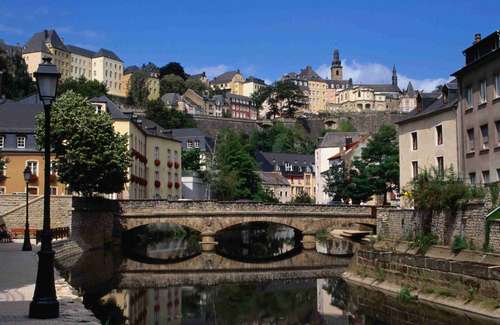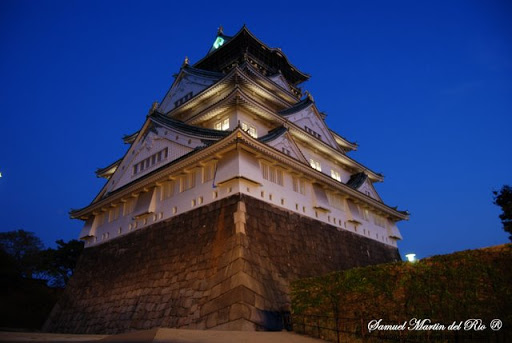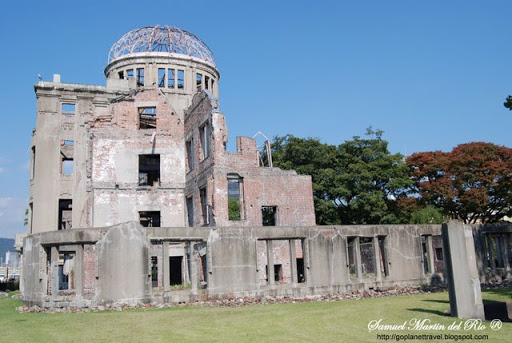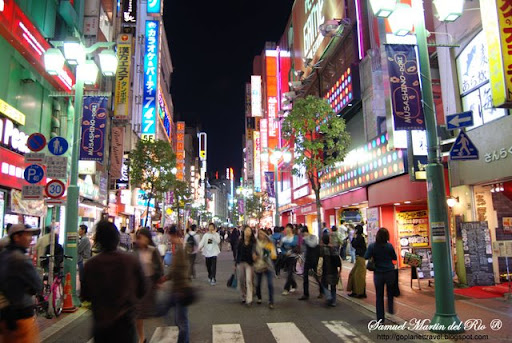The architecture of the Moors and native Andalusians who remained in Christian territory but  were not converted to Christianity is called Mudéjar Style. It developed mainly from 12th to 16th centuries and was strongly influenced by Moorish taste and workmanship but constructed for the use of Christian owners. Thus, it is not really a pure style: Mudejar architects frequently combined their techniques and artistic language with other styles, depending of the historical moment. Thus we can refer to Mudéjar, but also to Mudejar-Romanesque, Mudejar-Gothic or Mudejar-Renaissance.
were not converted to Christianity is called Mudéjar Style. It developed mainly from 12th to 16th centuries and was strongly influenced by Moorish taste and workmanship but constructed for the use of Christian owners. Thus, it is not really a pure style: Mudejar architects frequently combined their techniques and artistic language with other styles, depending of the historical moment. Thus we can refer to Mudéjar, but also to Mudejar-Romanesque, Mudejar-Gothic or Mudejar-Renaissance.
The Mudéjar style, a symbiosis of techniques and ways of understanding architecture resulting from Jewish, Muslim and Christian cultures living side by side, emerged as an architectural style in the 12th century. It is characterised by the use of brick as the main building material. Mudéjar did not involve the creation of new structures (unlike Gothic or Romanesque), but reinterpreting Western cultural styles through Islamic influences. The dominant geometrical character, distinctly Islamic, emerged conspicuously in the accessory crafts using cheap materials elaborately worked—tilework, brickwork, wood carving, plaster carving, and ornamental metals. Even after the Muslims were no longer employed, many of their contributions remained an integral part of Spanish architecture.
It is accepted that the Mudéjar style was born in Sahagún. Mudéjar extended to the rest of the Kingdom of León, Toledo, Ávila, Segovia, and later to Andalusia, especially Seville and Gran ada. The Mudéjar Rooms of the Alcázar of Seville, although classified as Mudéjar, are more closely related to the Nasrid Alhambra than to other buildings of the style as they were created by Pedro of Castile, who brought architects from Granada who experienced very little Christian influence. Centers of Mudéjar art are found in other cities, like Toro, Cuéllar, Arévalo and Madrigal de las Altas Torres. It became highly developed in Aragon, especially in Teruel during the 13th, 14th and 15th centuries, where a group of imposing Mudéjar-style towers were built. Other fine examples of Mudéjar can be found in Casa Pilatos (Seville), Santa Clara Monastery, in Tordesillas, or the churches of Toledo, one of the oldest and most outstanding Mudejar centers. In Toledo, the synagogues of Santa María la Blanca and El Tránsito (both Mudejar though not Christian) deserve special mention.
ada. The Mudéjar Rooms of the Alcázar of Seville, although classified as Mudéjar, are more closely related to the Nasrid Alhambra than to other buildings of the style as they were created by Pedro of Castile, who brought architects from Granada who experienced very little Christian influence. Centers of Mudéjar art are found in other cities, like Toro, Cuéllar, Arévalo and Madrigal de las Altas Torres. It became highly developed in Aragon, especially in Teruel during the 13th, 14th and 15th centuries, where a group of imposing Mudéjar-style towers were built. Other fine examples of Mudéjar can be found in Casa Pilatos (Seville), Santa Clara Monastery, in Tordesillas, or the churches of Toledo, one of the oldest and most outstanding Mudejar centers. In Toledo, the synagogues of Santa María la Blanca and El Tránsito (both Mudejar though not Christian) deserve special mention.
 were not converted to Christianity is called Mudéjar Style. It developed mainly from 12th to 16th centuries and was strongly influenced by Moorish taste and workmanship but constructed for the use of Christian owners. Thus, it is not really a pure style: Mudejar architects frequently combined their techniques and artistic language with other styles, depending of the historical moment. Thus we can refer to Mudéjar, but also to Mudejar-Romanesque, Mudejar-Gothic or Mudejar-Renaissance.
were not converted to Christianity is called Mudéjar Style. It developed mainly from 12th to 16th centuries and was strongly influenced by Moorish taste and workmanship but constructed for the use of Christian owners. Thus, it is not really a pure style: Mudejar architects frequently combined their techniques and artistic language with other styles, depending of the historical moment. Thus we can refer to Mudéjar, but also to Mudejar-Romanesque, Mudejar-Gothic or Mudejar-Renaissance.The Mudéjar style, a symbiosis of techniques and ways of understanding architecture resulting from Jewish, Muslim and Christian cultures living side by side, emerged as an architectural style in the 12th century. It is characterised by the use of brick as the main building material. Mudéjar did not involve the creation of new structures (unlike Gothic or Romanesque), but reinterpreting Western cultural styles through Islamic influences. The dominant geometrical character, distinctly Islamic, emerged conspicuously in the accessory crafts using cheap materials elaborately worked—tilework, brickwork, wood carving, plaster carving, and ornamental metals. Even after the Muslims were no longer employed, many of their contributions remained an integral part of Spanish architecture.
It is accepted that the Mudéjar style was born in Sahagún. Mudéjar extended to the rest of the Kingdom of León, Toledo, Ávila, Segovia, and later to Andalusia, especially Seville and Gran
 ada. The Mudéjar Rooms of the Alcázar of Seville, although classified as Mudéjar, are more closely related to the Nasrid Alhambra than to other buildings of the style as they were created by Pedro of Castile, who brought architects from Granada who experienced very little Christian influence. Centers of Mudéjar art are found in other cities, like Toro, Cuéllar, Arévalo and Madrigal de las Altas Torres. It became highly developed in Aragon, especially in Teruel during the 13th, 14th and 15th centuries, where a group of imposing Mudéjar-style towers were built. Other fine examples of Mudéjar can be found in Casa Pilatos (Seville), Santa Clara Monastery, in Tordesillas, or the churches of Toledo, one of the oldest and most outstanding Mudejar centers. In Toledo, the synagogues of Santa María la Blanca and El Tránsito (both Mudejar though not Christian) deserve special mention.
ada. The Mudéjar Rooms of the Alcázar of Seville, although classified as Mudéjar, are more closely related to the Nasrid Alhambra than to other buildings of the style as they were created by Pedro of Castile, who brought architects from Granada who experienced very little Christian influence. Centers of Mudéjar art are found in other cities, like Toro, Cuéllar, Arévalo and Madrigal de las Altas Torres. It became highly developed in Aragon, especially in Teruel during the 13th, 14th and 15th centuries, where a group of imposing Mudéjar-style towers were built. Other fine examples of Mudéjar can be found in Casa Pilatos (Seville), Santa Clara Monastery, in Tordesillas, or the churches of Toledo, one of the oldest and most outstanding Mudejar centers. In Toledo, the synagogues of Santa María la Blanca and El Tránsito (both Mudejar though not Christian) deserve special mention.



































































































No comments:
Post a Comment